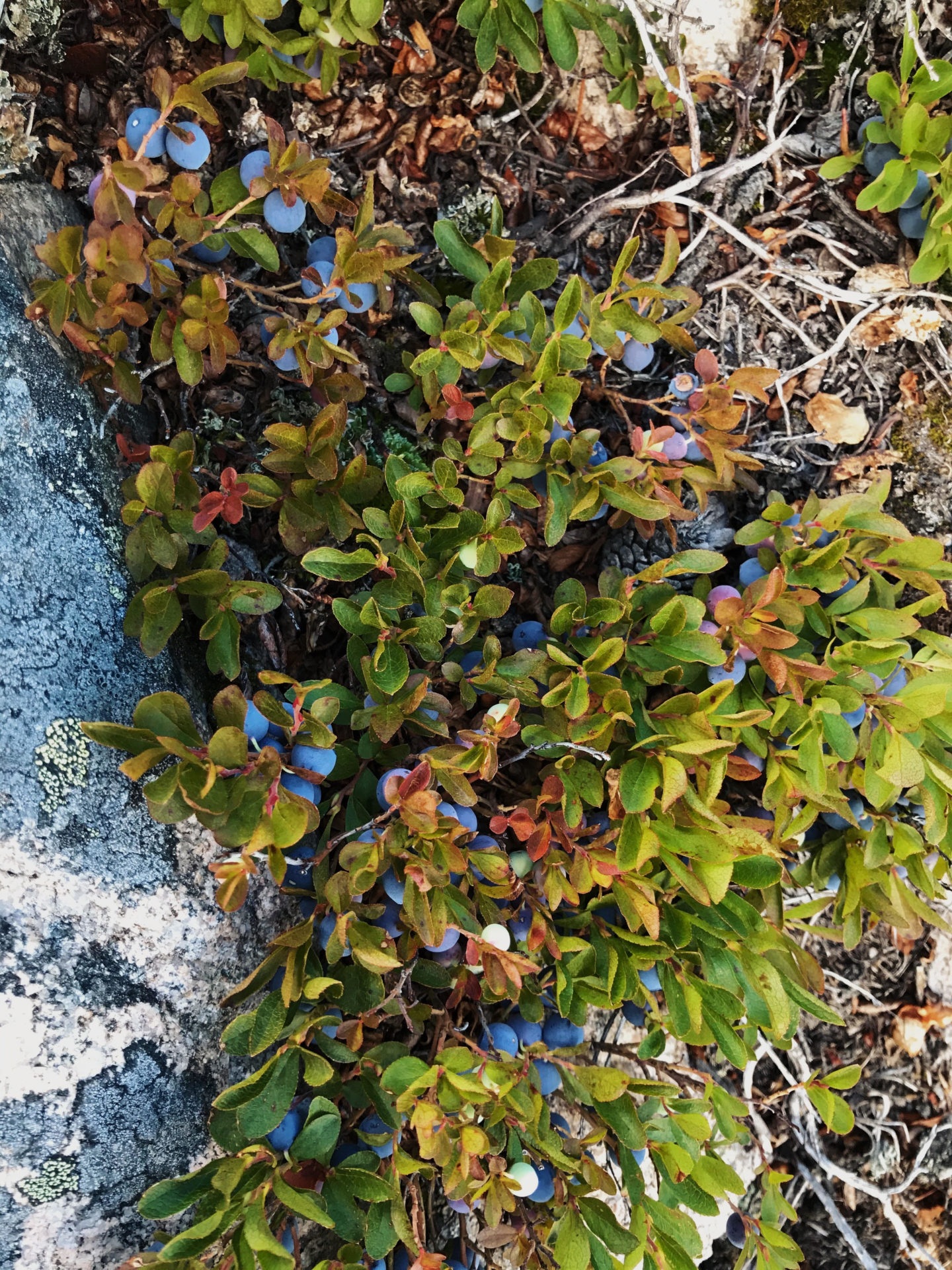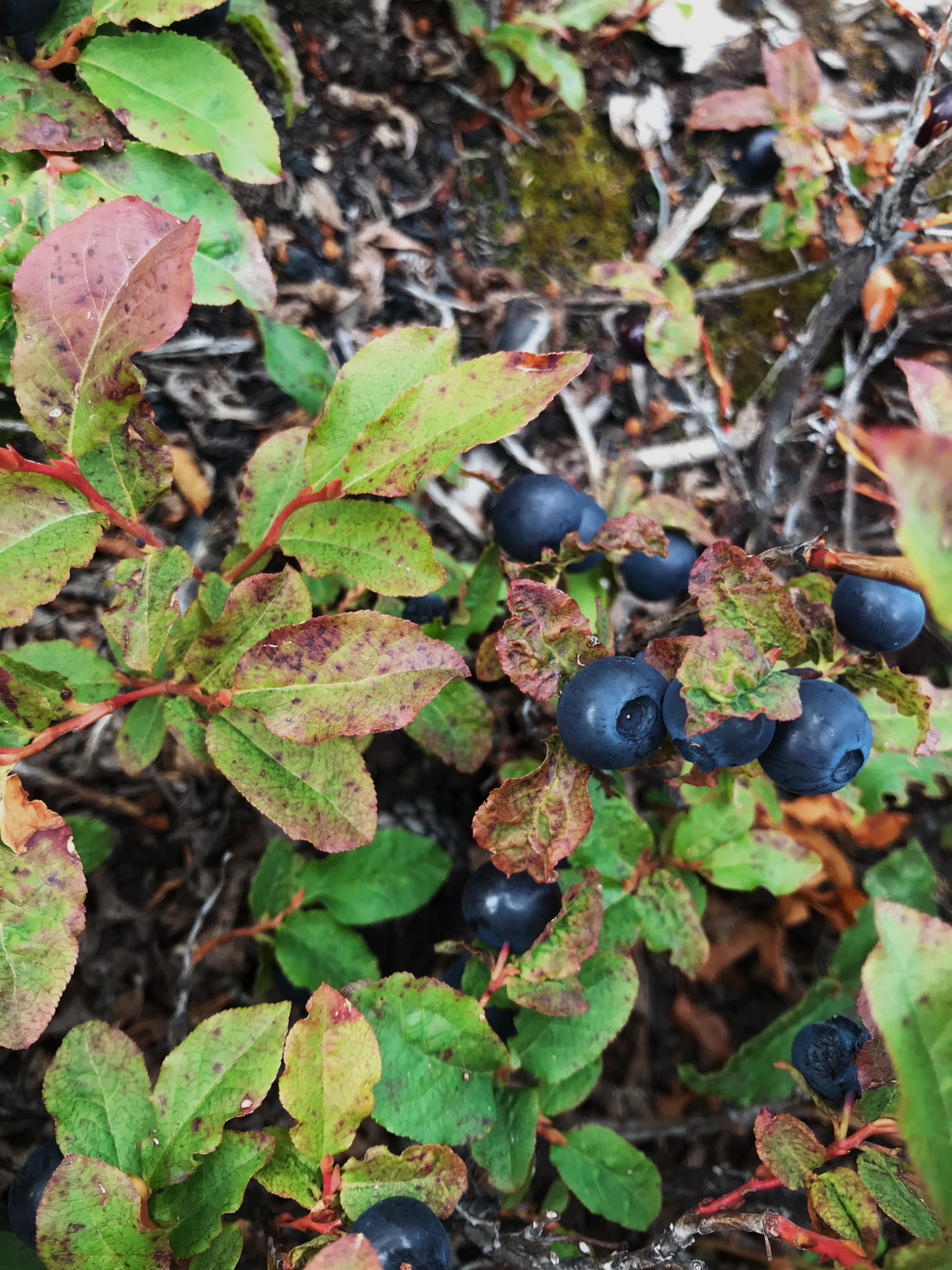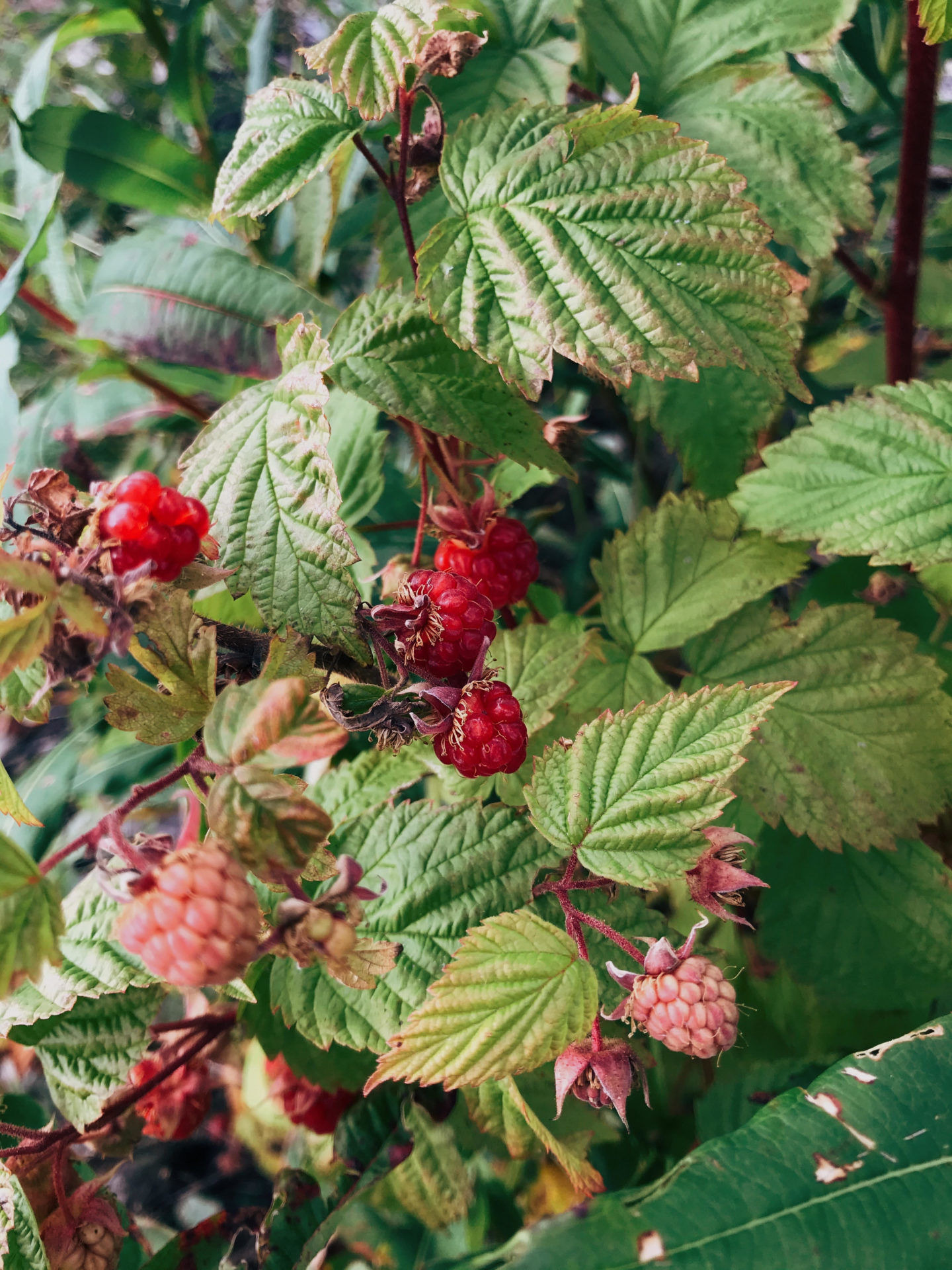Each season has its ebbs and flows, but from August through to the end of October, it can feel like a lot of flowing, with little ebb to be found. It’s a season where there is an abundance of foraging, prep for hunting season begins, the salmon are running, and all those last-minute projects need to be ticked off the to-do list before the ebb of winter arrives.
Advertisement
When it seems that there is so much to do, with so little time, trips where multiple tasks can be accomplished hold the best “bang for your buck.” When heading out to the backcountry to forage for berries, if you look closely you may just find three different varieties in the same patch!

Dwarf Blueberry
Vaccinium caespitosum
Advertisement
The smallest and certainly most tedious to pick, you might step right on top of these tiny berries if you aren’t looking for them. The plants can be found at a variety of elevations, in a variety of habitats, and form a short, dense, mat along the earth. Blueberries are light to dark blue when ripe, with a light bloom on them. Patience is needed when picking them; some people use a special comb or tool to pick, but a great technique to use is to place your hand underneath the plant and wiggle your fingers until the ripe berries come loose.

Black Huckleberry
Vaccinium membranaceum
Advertisement
The best tasting berry of them all, black huckleberries can be found in old cut blocks and in the understory of coniferous forests. The bushes grow much taller than dwarf blueberry – anywhere from mid shin to knee height. The berries almost have a shine to them and range from a dark red when almost ripe to a deep purple-black when at their prime; berries picked with a reddish tinge to them will be tart, whereas the purple-black berries are very sweet.

Red Raspberry
Rubus idaeus
Similar in appearance to their domestic counterpart, wild raspberries grow on bristly upright canes. They are often found in disturbed areas, like the edge of old logging roads or cut blocks. They seem to grow in little patches – once you find one group, a quick look around will yield many more, and the canes are often drooped over when full of ripe berries. Wild raspberries are smaller and juicier than the raspberries that grow in your garden at home, which can make them quite delicate to pick if very ripe.
Fun fact: While they may be called raspberries, the raspberry is actually a drupelet – not technically a berry, but an aggregate fruit.